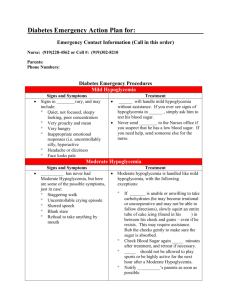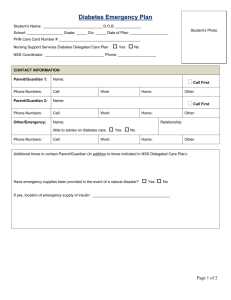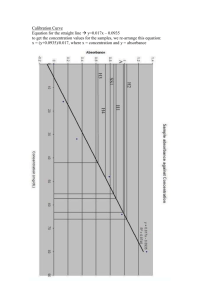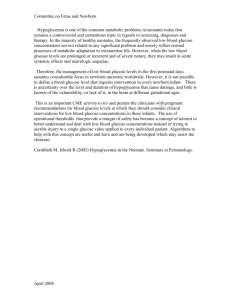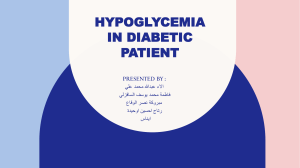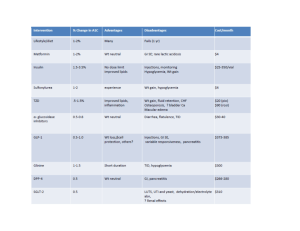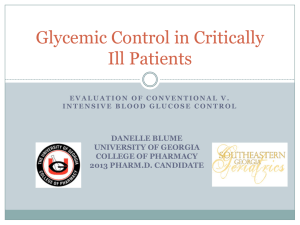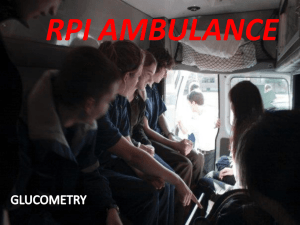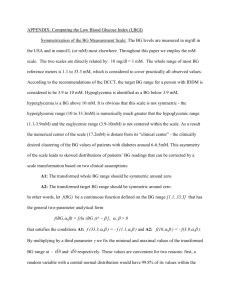State Form for Diabetes Emergency Action Plan
advertisement
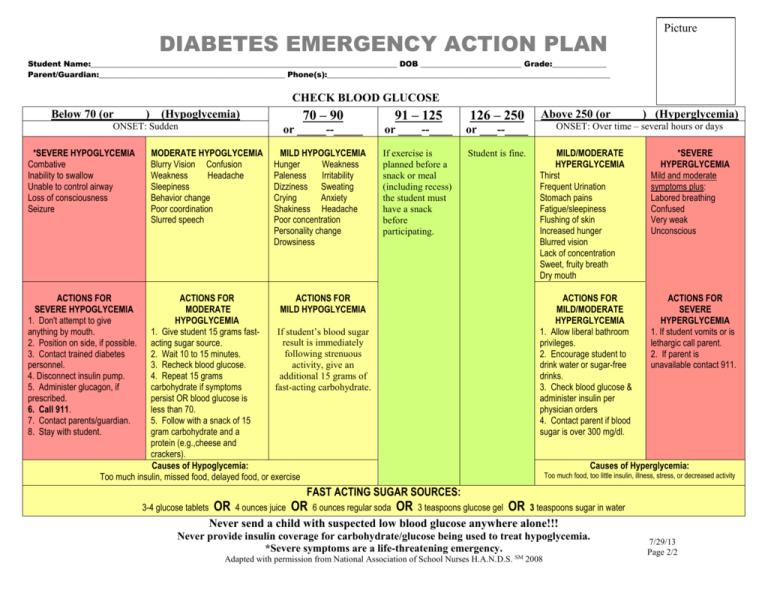
DIABETES EMERGENCY ACTION PLAN Picture Student Name:_______________________________________________________________________________ DOB __________________________ Grade:______________ Parent/Guardian:________________________________________________ Phone(s):_________________________________________________________________________ CHECK BLOOD GLUCOSE Below 70 (or _____)_ (Hypoglycemia) 70 – 90 91 – 125 126 – 250 ONSET: Sudden or _____--_____ or ____--____ or ___--____ If exercise is planned before a snack or meal (including recess) the student must have a snack before participating. Student is fine. *SEVERE HYPOGLYCEMIA Combative Inability to swallow Unable to control airway Loss of consciousness Seizure MODERATE HYPOGLYCEMIA Blurry Vision Confusion Weakness Headache Sleepiness Behavior change Poor coordination Slurred speech MILD HYPOGLYCEMIA Hunger Weakness Paleness Irritability Dizziness Sweating Crying Anxiety Shakiness Headache Poor concentration Personality change Drowsiness ACTIONS FOR SEVERE HYPOGLYCEMIA 1. Don't attempt to give anything by mouth. 2. Position on side, if possible. 3. Contact trained diabetes personnel. 4. Disconnect insulin pump. 5. Administer glucagon, if prescribed. 6. Call 911. 7. Contact parents/guardian. 8. Stay with student. ACTIONS FOR ACTIONS FOR MODERATE MILD HYPOGLYCEMIA HYPOGLYCEMIA If student’s blood sugar 1. Give student 15 grams fastresult is immediately acting sugar source. following strenuous 2. Wait 10 to 15 minutes. 3. Recheck blood glucose. activity, give an 4. Repeat 15 grams additional 15 grams of carbohydrate if symptoms fast-acting carbohydrate. persist OR blood glucose is less than 70. 5. Follow with a snack of 15 gram carbohydrate and a protein (e.g.,cheese and crackers). Causes of Hypoglycemia: Too much insulin, missed food, delayed food, or exercise 3-4 glucose tablets OR OR 6 ounces regular soda ONSET: Over time – several hours or days MILD/MODERATE HYPERGLYCEMIA Thirst Frequent Urination Stomach pains Fatigue/sleepiness Flushing of skin Increased hunger Blurred vision Lack of concentration Sweet, fruity breath Dry mouth *SEVERE HYPERGLYCEMIA Mild and moderate symptoms plus: Labored breathing Confused Very weak Unconscious ACTIONS FOR MILD/MODERATE HYPERGLYCEMIA 1. Allow liberal bathroom privileges. 2. Encourage student to drink water or sugar-free drinks. 3. Check blood glucose & administer insulin per physician orders 4. Contact parent if blood sugar is over 300 mg/dl. ACTIONS FOR SEVERE HYPERGLYCEMIA 1. If student vomits or is lethargic call parent. 2. If parent is unavailable contact 911. Causes of Hyperglycemia: Too much food, too little insulin, illness, stress, or decreased activity FAST ACTING SUGAR SOURCES: 4 ounces juice Above 250 (or _____) (Hyperglycemia) OR 3 teaspoons glucose gel OR 3 teaspoons sugar in water Never send a child with suspected low blood glucose anywhere alone!!! Never provide insulin coverage for carbohydrate/glucose being used to treat hypoglycemia. *Severe symptoms are a life-threatening emergency. Adapted with permission from National Association of School Nurses H.A.N.D.S. SM 2008 7/29/13 Page 2/2
